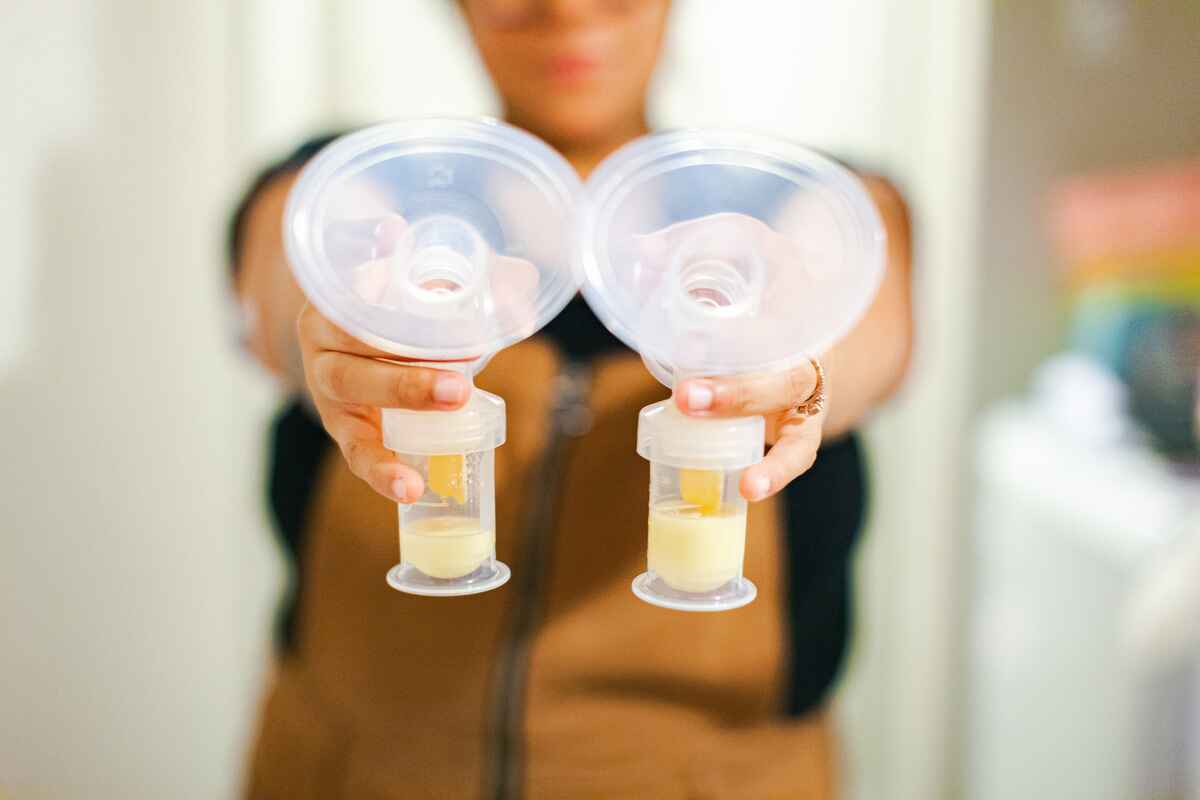
Popular Locations
- Yale New Haven Children's Hospital
- Yale New Haven Hospital - York Street Campus
- Yale New Haven Hospital - Saint Raphael Campus

Published April 02, 2024

Feeding a baby doesn’t have to just include breastfeeding or formula. Sometimes pumping milk is the best option for families. Parents preparing for the return to work, trouble with latching or low milk supply are just a few of the reasons why people use a breast pump.
Advanced Practice Provider Kate Manuel, international board certified lactation consultant and manager of the Yale New Haven Hospital Lactation Program, and Physician Assistant Meredith Young, international board certified lactation consultant say a little bit of preparation can help patients have a successful feeding journey. Before you start using a breast pump:
The first three months are important for establishing a good milk supply. Those who are mainly breastfeeding may only need to pump once a day if they want to build a freezer stash. But exclusive pumpers should try and pump as often as their baby eats, which can be eight times a day. If you’re away from your baby, look at a photo of them while you pump to help make more milk.
“There’s really no magic bullet to increase supply,” said Manuel. “The most important thing is to increase frequency of milk removal and to make sure you’re effectively removing milk by using the right flange, the right setting, taking care of yourself, getting enough sleep, eating and drinking.”
In some cases, supplements can be helpful if frequent and effective pumping isn’t working well. However, always speak with your clinician before taking any supplement as there could be contraindications.
“Pumping in general should be pain free, so if it's hurting that tells us that we need to adjust something,” said Young.
Common mistakes that could lead to pain, infection, or nipple damage include using the wrong flange size, using the incorrect pump settings and pumping too much. While many people wish to increase their supply, too much milk can lead to uncomfortable engorgement or clogged ducts.
If that’s the case and you are trying to decrease supply, it’s important to go slow and steady. Over the course of several weeks or months, go longer between pumping sessions and pump for shorter periods of time.
If you’re struggling with pumping or something doesn’t feel right, an appointment with a member of the YNHH lactation team can help. They offer telehealth and in person appointments where patients can try different pumps, flange sizes, and get help with breastfeeding too.
“Some people find that exclusive pumping works better for them, but if your goal is to exclusively breastfeed in the beginning, give it a little bit of time to see where it goes. We are here to help you get there,” said Young.
Learn more about the Yale New Haven Hospital Lactation Program or call 203-688-MILK to schedule an appointment.